#FlashbackFriday: Some Snips and Clips About Barbers Throughout Exchange History
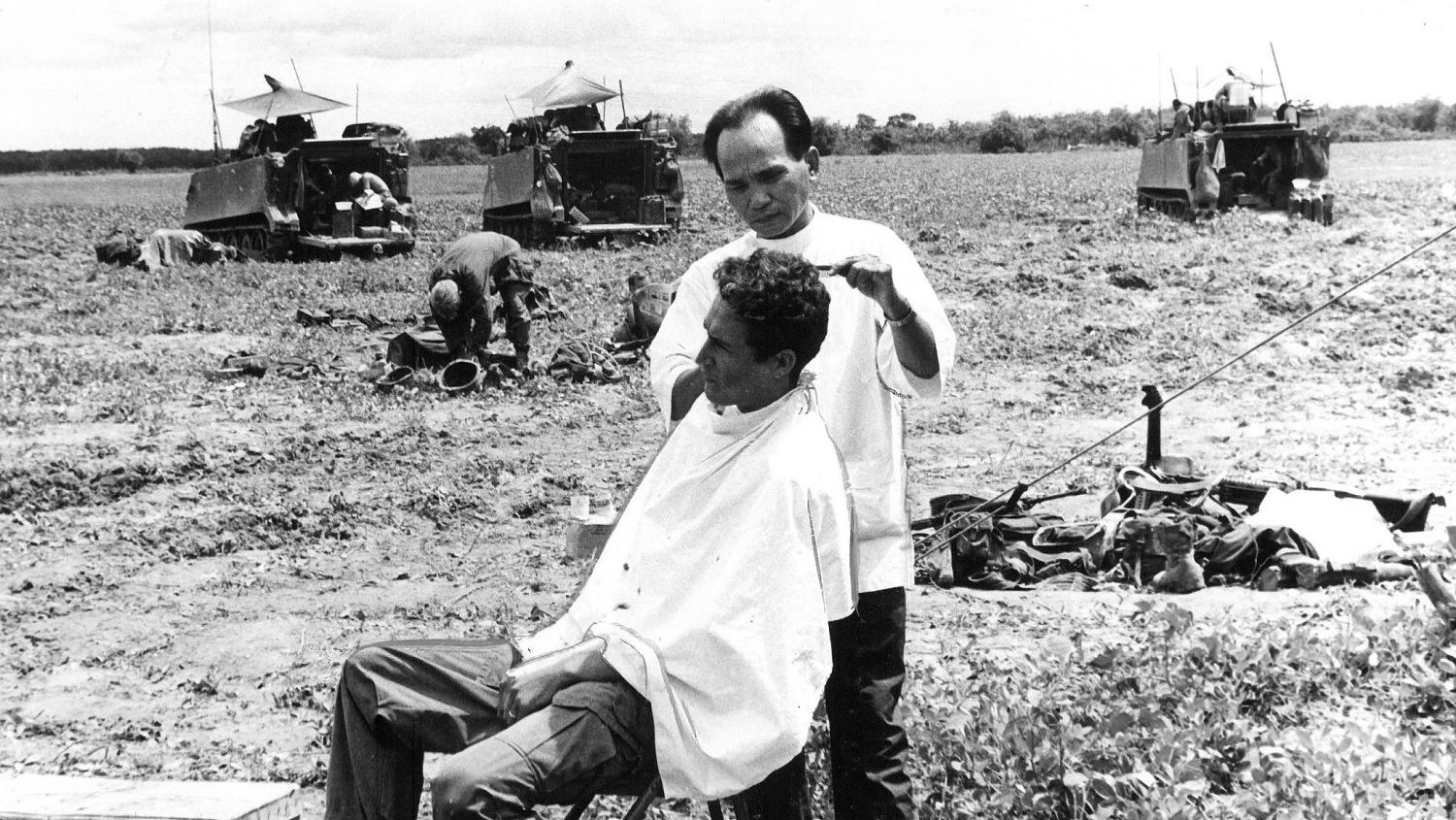
Barbers have a long history with the Exchange, going back to at least the early 1900s until the present, when many PXs and BXs offer barbershops.
And it was an interesting history, filled with longtime cutters, unusual locations and the occasional celebrity. Here are some photos we dug out of the archives.
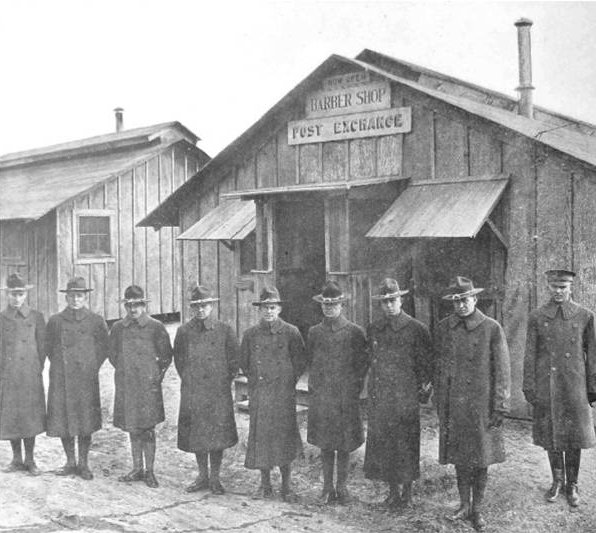
From 1917: Doughboys in front of the post exchange barber shop at Camp Bowie, Texas. In the United States during World War I, post exchanges were present at thousands of military camps that trained 2 million Soldiers for deployment to France. After the war, Camp Bowie, located in Fort Worth, became a demobilization center, preparing Soldiers for entry into civilian life before it closed Aug. 15, 1919.

From 1943: A PX barber gives a GI a close shave in a field in Ferryville, Tunisia. During World War II, wherever U.S. troops were stationed throughout the North Africa-Mediterranean Theater, post exchanges also were there, operated by the Army Exchange Service or individual military units. The locations ranged from Casablanca on the northwest coast of Africa to Bizerta, Tunisia, on the northeastern coast and on up to Corsica and Sicily. Stores were set up in public swimming pools damaged by bombs, buildings once occupied by five-and-ten-cent stores, on the backs of trucks and in tents.
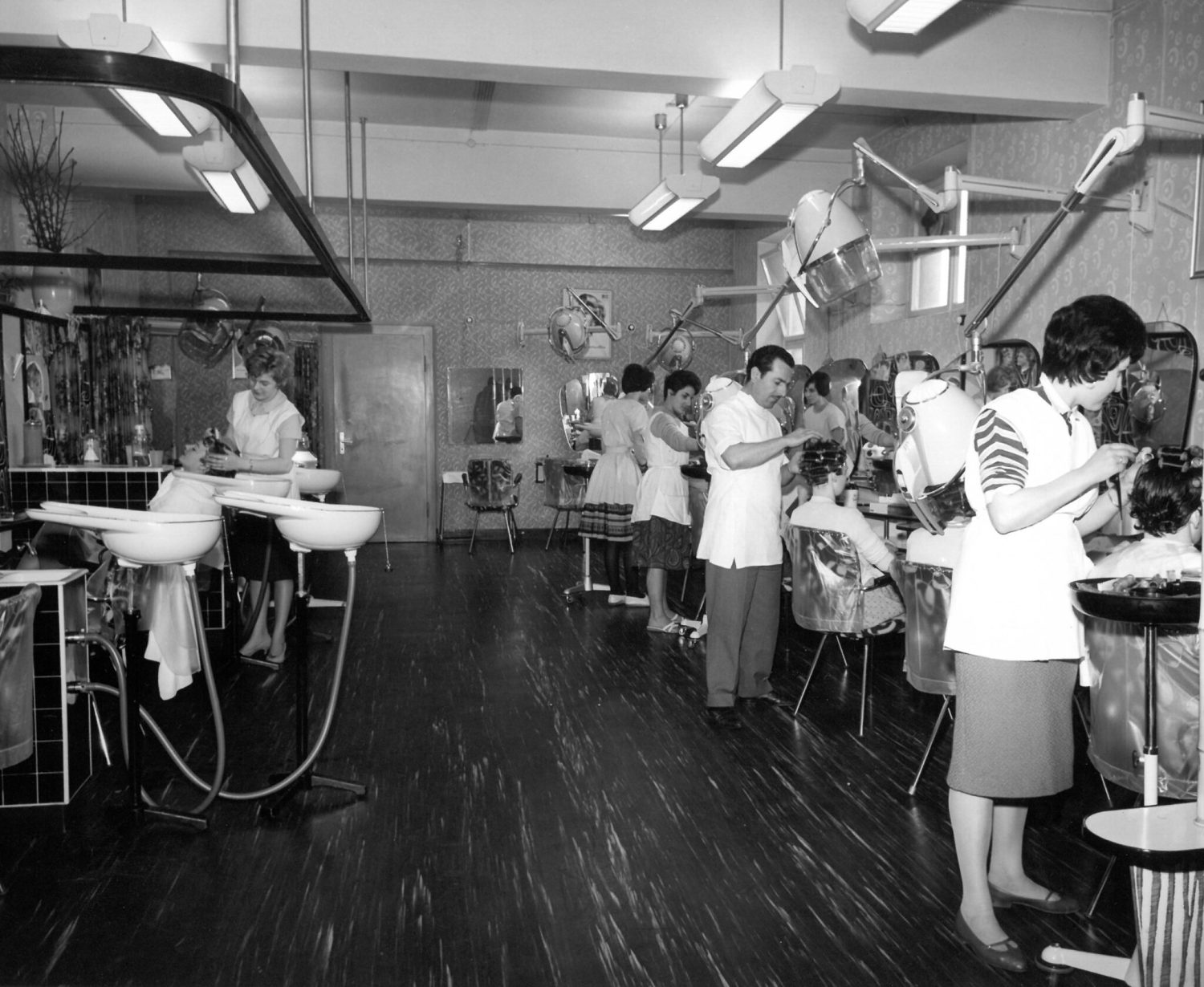
Circa 1950: A European Exchange System (EES) beauty shop in Fuerth, Germany. The beauty shop was one of hundreds of services operated by the EES in the post-World War II years. By 1947, EES operated 203 barber shops and 55 beauty shops, among other services. The EES operated post exchanges throughout Europe from World War II to 1972, when it merged with the Army & Air Force Exchange Service.
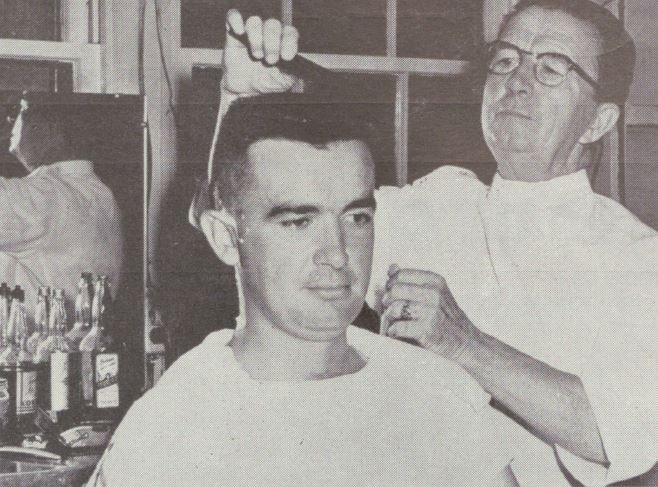
In this photo from the October 1955 Exchange Post, Fort Sill’s Claude S. Holman gives his last haircut before retiring after a 40-year-plus career. Holman began his career in 1914 at Fort Still after serving in the Navy during the Boxer Rebellion in China. Until 1943, barbers were assigned to a battery in an outfit and only cut hair for that unit. Beginning in 1943, Holman was directly associated with the Fort Sill PX. He estimated that he’d given 216,000 military haircuts.
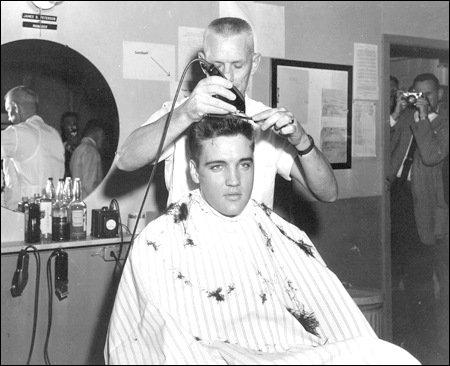
A barber cuts Elvis’ hair at Fort Chaffee, Arkansas, where the singer received his first Army haircut.
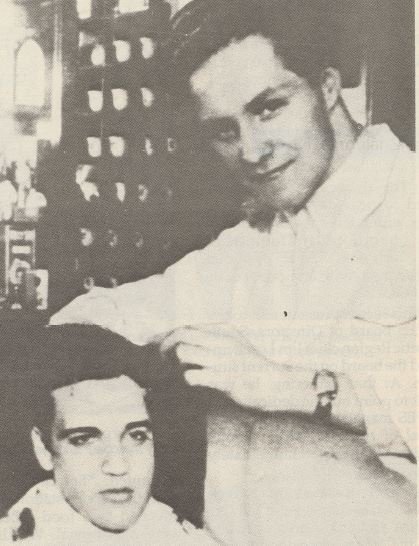 After basic training, Elvis Presley joined the 3rd Armored Division at Friedberg, West Germany. In Germany, he found his favorite barber, Karl Heinz Stein, who was one of nine barbers in the Ray Barracks when Elvis arrived. In a 1992 Exchange Post story, Stein recalled that one day in October 1958, the PX chief rushed in and, with “a bright and red face,” shouted, “Have you got everything clean? Elvis is coming!” As Elvis sat down to wait for his haircut, the shy young Stein actually hoped that he wouldn’t get him as a customer. But he did. “Hair not too short,” Elvis said. “Back and top the same length, leave the hair on top as it is.”
After basic training, Elvis Presley joined the 3rd Armored Division at Friedberg, West Germany. In Germany, he found his favorite barber, Karl Heinz Stein, who was one of nine barbers in the Ray Barracks when Elvis arrived. In a 1992 Exchange Post story, Stein recalled that one day in October 1958, the PX chief rushed in and, with “a bright and red face,” shouted, “Have you got everything clean? Elvis is coming!” As Elvis sat down to wait for his haircut, the shy young Stein actually hoped that he wouldn’t get him as a customer. But he did. “Hair not too short,” Elvis said. “Back and top the same length, leave the hair on top as it is.”
Elvis liked the result and paid Stein a dollar for the 35-cent haircut, telling him to keep the change. From then on Elvis insisted that only Stein cut his hair. He preferred Stein to such an extent that when Stein was temporarily transferred as auxiliary to the barber salon next to the Sergeants’ Club, Elvis went there to get his hair cut.
When Elvis’ division, the Spearhead, was moved to Grafenwoehr for maneuvers, Stein and a teammate followed. And even when Elvis set up his own home in Bad Nauheim, he still sought out Stein for his haircuts.
For decades afterward, Elvis fans made a pilgrimage to the Bad Nauheim barbershop on Aug. 15, the eve of the anniversary of Elvis’ 1977 death, to visit the place Stein cut Elvis’ hair. According to the Elvis Presley fans of Nashville Facebook page, Stein died in 2020. He was a barber for 37 years.
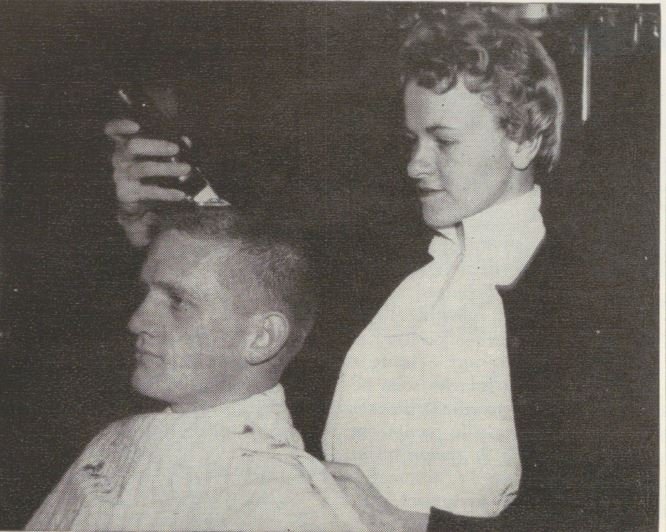
In this photo from the May 1959 Exchange Post, “lady barber” Mrs. Preston Douglas gives an Airman a haircut at Westover AFB in Massachusetts. Although she wasn’t the first female barber at an Exchange facility, a woman giving haircuts at the time was unusual enough that some Airmen balked at having Douglas cut their hair. She said they were probably just bashful types who were afraid their ears would turn red after getting in the chair.
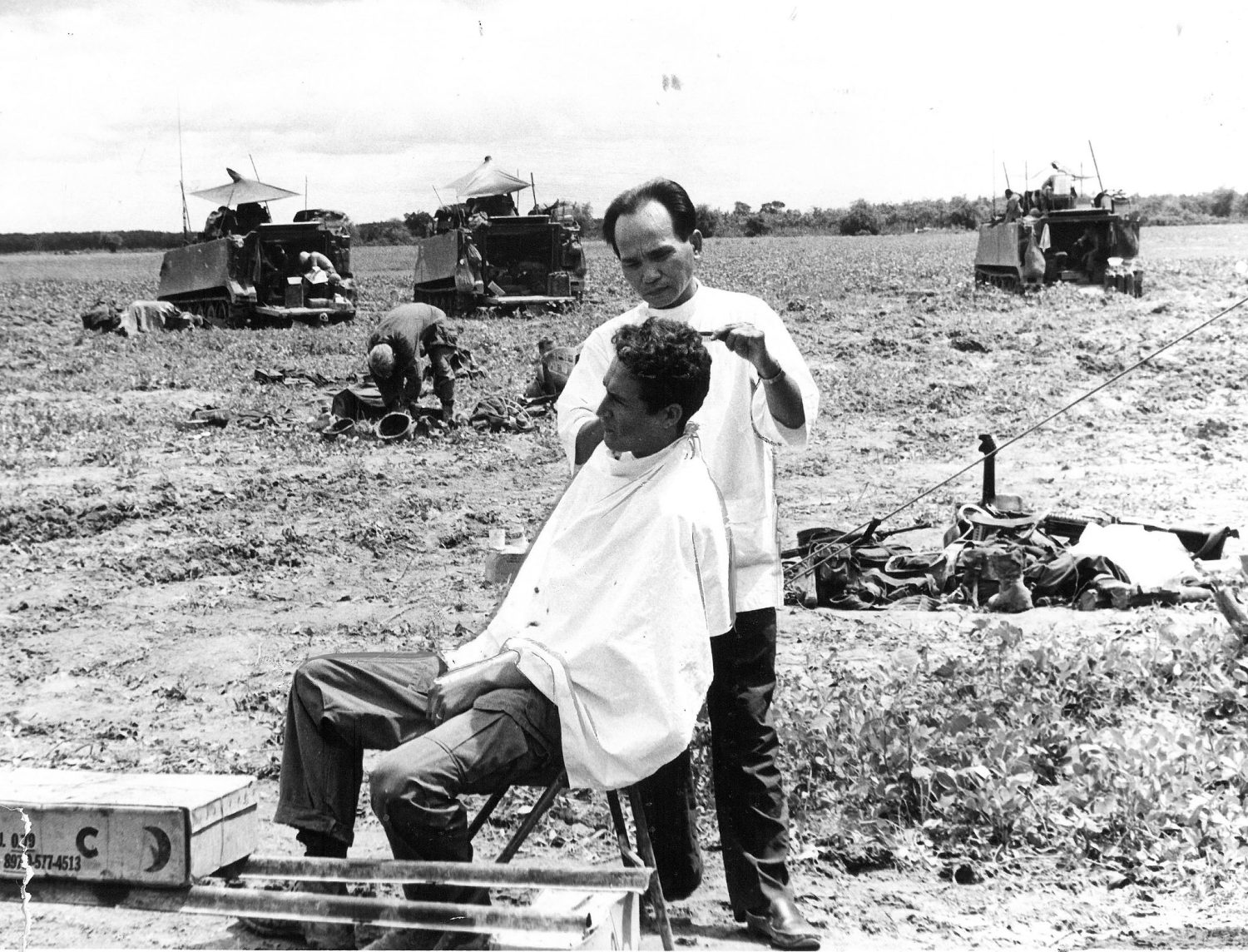
Circa 1969: An American Soldier gets a haircut from a Vietnamese barber working as a concessionaire for the Vietnam Regional Exchange, circa 1969. During the Vietnam War, AAFES’ Vietnam Regional Exchange operated more than 2,500 concessions, including 371 barber shops.
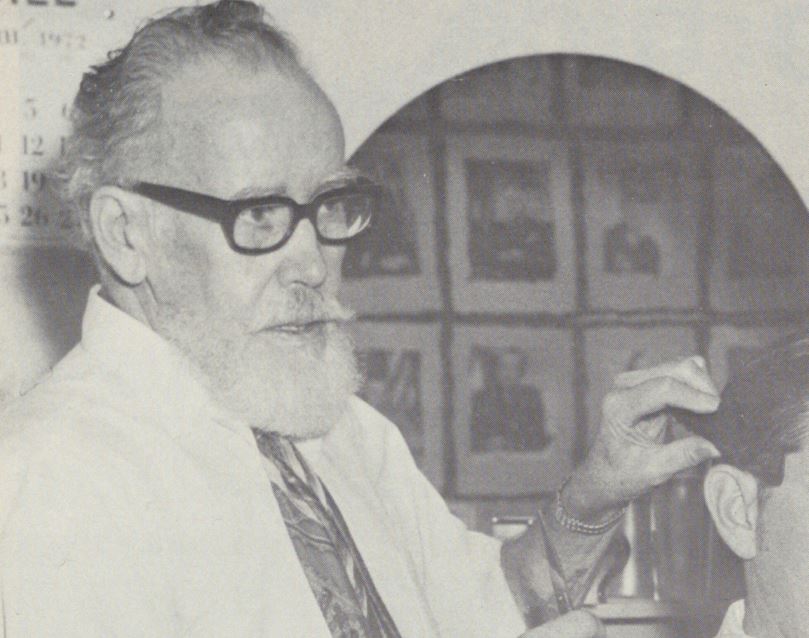
From the November 1972 Exchange Post: Camp (now Fort) McCoy barber Bill Kellar said that he held the record for cutting the Army’s hair longer than anyone alive at the time—55 years. The 70-year-old Kellar, who was known for his wit and listening skills, cut his first head of hair in 1917 at Camp Grant, Ill. By 1972, he had spent 47 years at Camp McCoy.
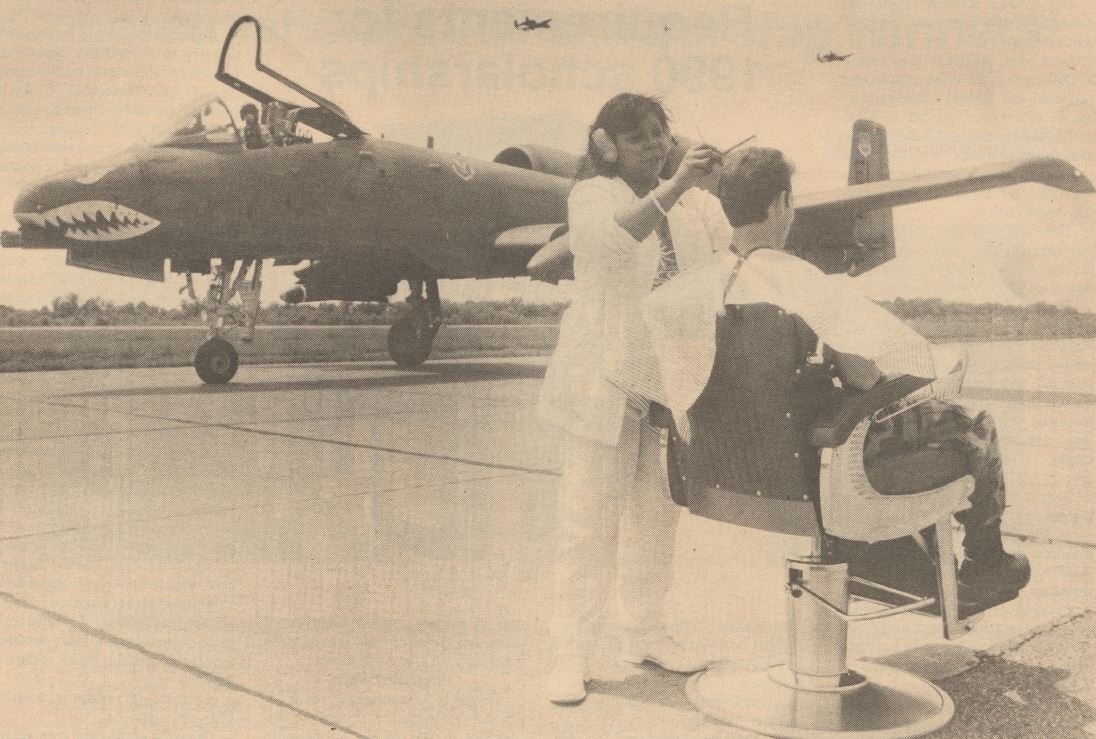
From the July/August 1989 Exchange Post: When England AFB asked for a barber on the flight line to cut hair for personnel working long shifts, the Exchange was quick to respond. Barber Sharon Williams’ chair and gear were moved to a new location, where she gave haircuts while A-10 Thunderbolds took off and landed nearby.
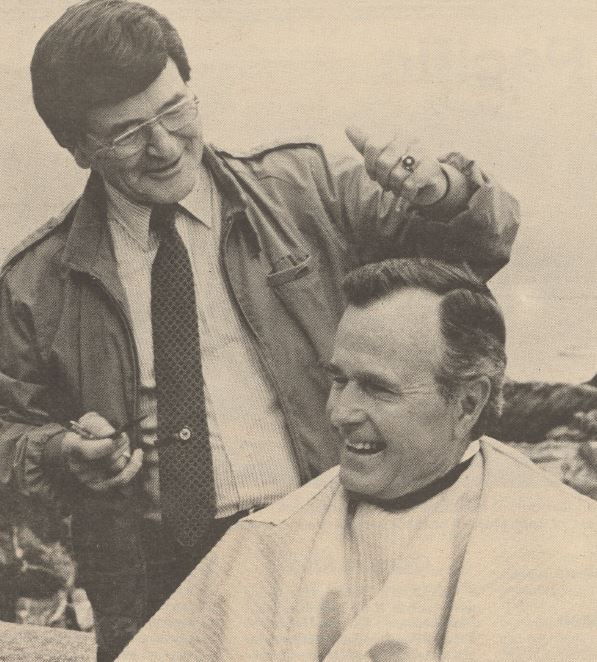
In a September/October 1990 Exchange Post photo, Pease AFB barber Emil Roy cuts President George H.W. Bush’s hair. Roy, whose family lived not far from the president in Maine, also cut Bush’s sons’ and grandsons’ hair.
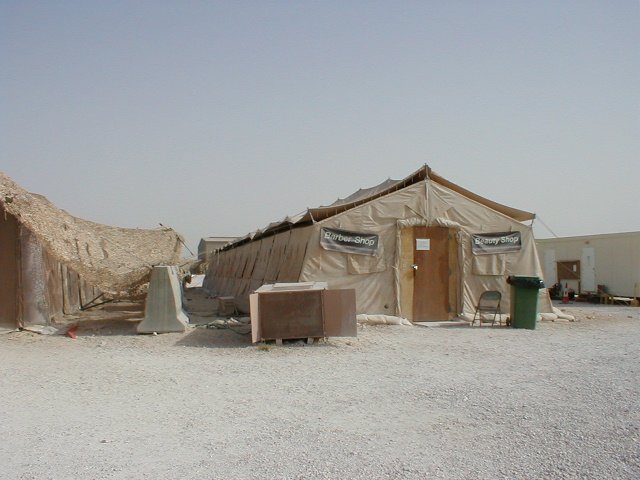
Circa 2002: The Exchange barber and beauty shop at Qatar’s Al Udeid AB. To serve U.S. troops deployed to Operation Enduring Freedom, AAFES, beginning in late 2001, opened hundreds of retail facilities in 10 Southwest Asian and Middle Eastern countries. The facilities included dozens of concessions, such as barber and beauty shops. Many concessions were operated by residents of the country in which they were located or by people from other countries in the region. Similar concessions also served American warfighters during Operation Iraqi Freedom, starting in 2003.

From 2018: Barbers Prakash Nai, second from left, and Pankaj Bhatiya, far right, stand in front of the new Exchange barber shop at a troop-run store in the African country of Niger. Owner Kevin Dixon is second from right.
Sources: Exchange Post archives, Exchange history Flickr.

